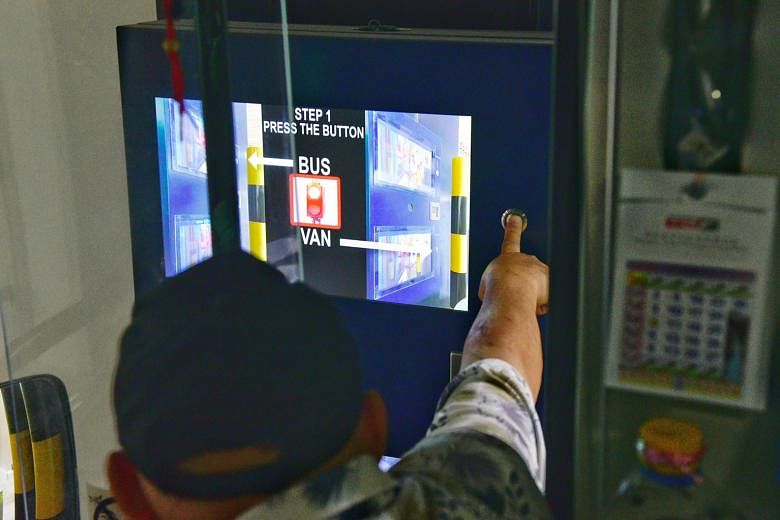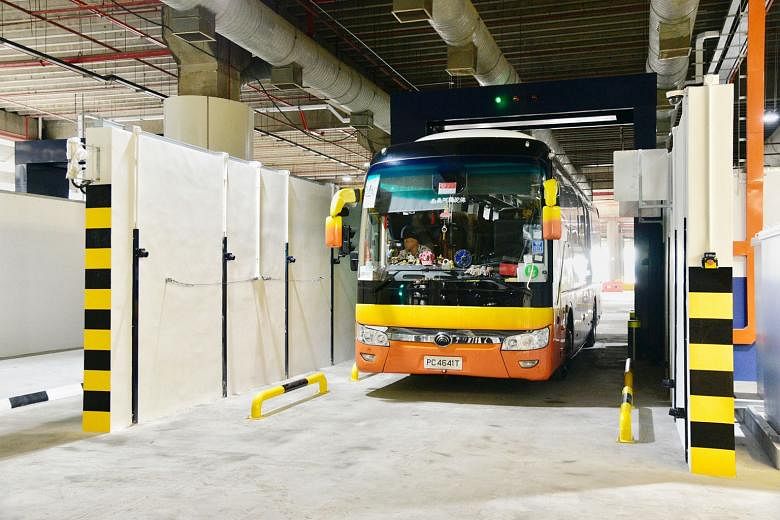Security for vans and buses entering Singapore through the Tuas Checkpoint will be stepped up in a move to fight terrorism, smuggling and stowaways.
The Immigration and Checkpoints Authority (ICA) has set up two imaging scanners, which all vans and buses will have to go through, that can detect compartments that have been modified or contain explosives.
Officers have been familiarising drivers with the new process, which will begin in the second half of the year, according to Assistant Commissioner (AC) Colin Tan, who heads the checkpoint.
For the past five years, officers have detected an average of 13 smuggling cases involving buses with modified compartments at both checkpoints, said an ICA spokesman.
"Despite stringent checks, smuggling attempts have not ceased," added the spokesman.
The change is not expected to extend passengers' waiting time, said AC Tan, adding: "Clearances for both bus and passengers will be conducted simultaneously... We will strive to have buses waiting for their passengers."
Nor will the X-ray scanner pose a health risk to drivers as their compartment will not be scanned but manually inspected.
Currently, officers have to manually inspect the entire bus, boarding it, once passengers have got down for immigration checks, to look for anomalies.
Second Minister for Home Affairs Josephine Teo said during the Budget debate in Parliament last month that the bus scanners are expected to change that process.
Officers will now target questionable areas flagged by the scan for checks instead of having to inspect the entire bus in person, which is time consuming and possibly less effective, said Mrs Teo, who is now the Manpower Minister.
During a demonstration yesterday, a bus is driven into the scanner when an automatic barrier was lifted after a camera captured the bus's licence number.
The bus then went through a sensor that can detect radioactive materials, before moving towards a control panel on which a button to start the scan is found. The driver pressed the button.
When a green light came on, the driver drove the bus through the scanner. The images were sent to a control room facing the scanners.
"We want that assurance that whatever's coming in is not an explosive-laden bus. When you have a bus that size and you're able to pack in that amount of explosives, it can cause a major disaster," said AC Tan. "Some buses have modified compartments that can be hard to detect. With the X-ray images, they can know where to focus their attention."
The ICA is studying plans to implement bus scanners at Woodlands Checkpoint as well but they may have to be set up differently because of the space constraints.
Besides the new bus scanners, passengers will have to go through metal detectors and have their bags scanned at the arrival hall before the immigration processing.
Previously, passengers cleared security after immigration. The change will be rolled out in the same period as the scanners.



